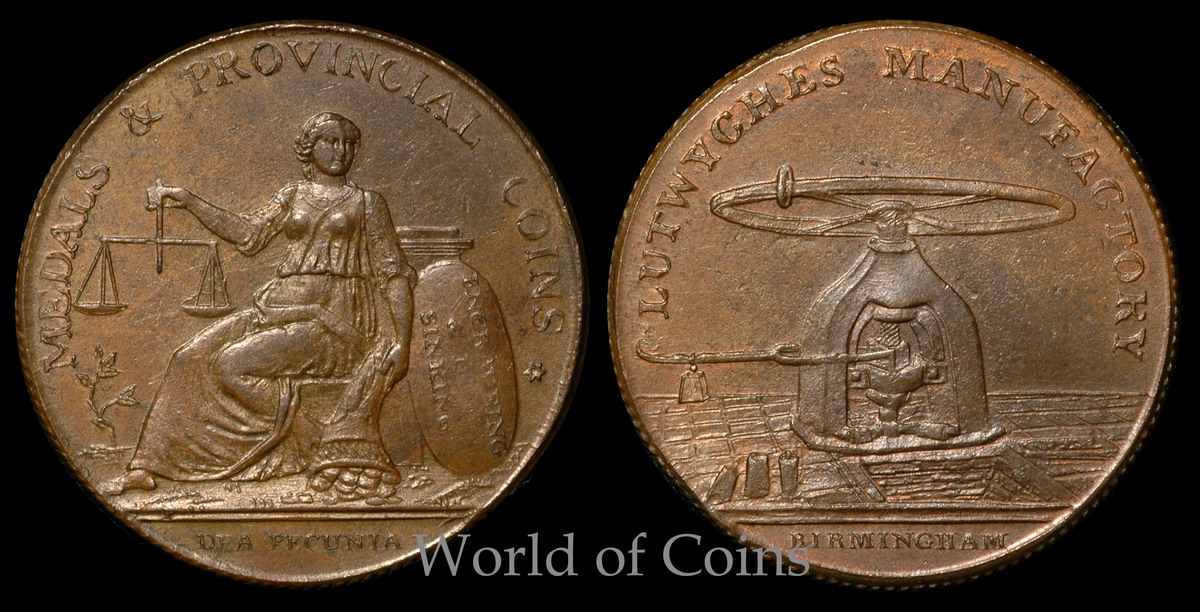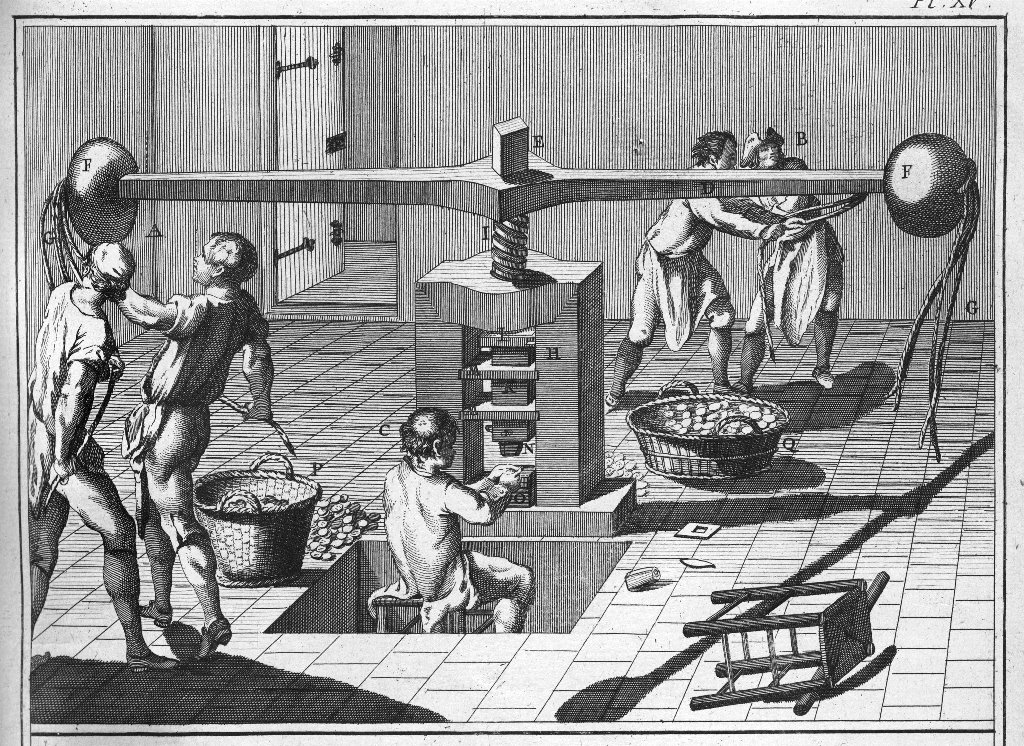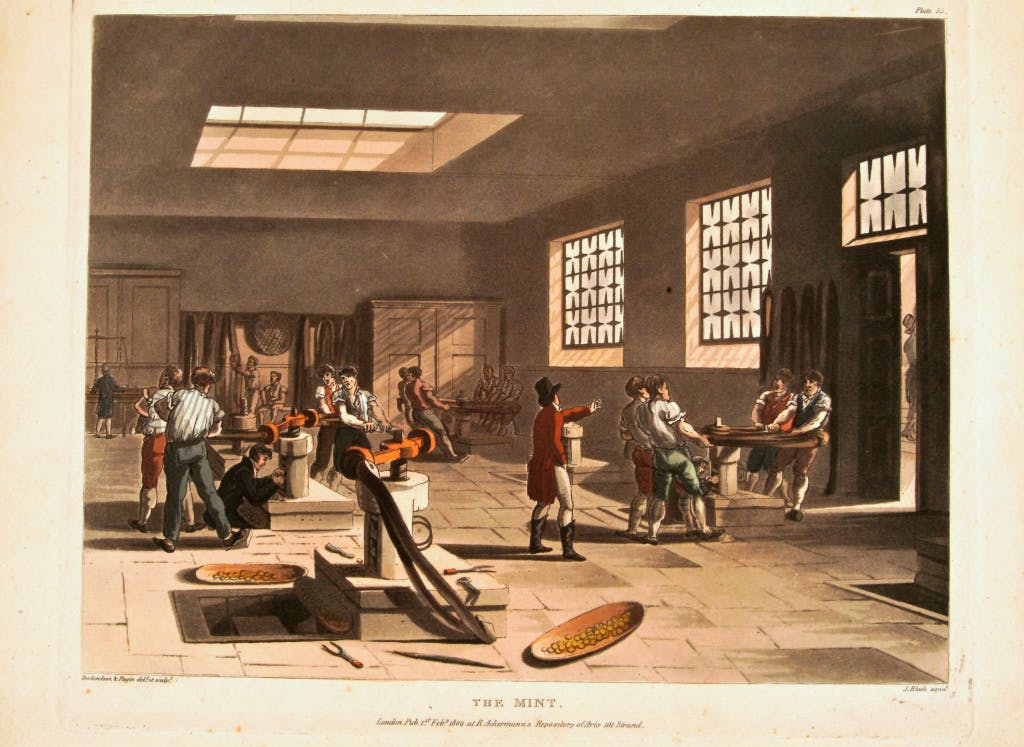
Online collections
monedastodas.com
All collections » Tokens » Birmingham Halfpenny Juno
On the obverse, the goddess Juno Moneta is depicted seated, in her right hand she holds a pair of scales, and to her left is an inverted cornucopia, from which coins spill out. Behind her is an oval sign that says "ENGRAVEING & DIE SINKING". Circular legend: “MEDALS & PROVINCIAL COINS”, and in the lower part, under the image, the inscription in Latin: “DEA PECUNIA”.

The reverse side depicts a hand press for
minting coins, in front of which there is a recess on the floor where the minter
was located. Circle legend: “LUTWYCHES MANUFACTORY”.
Ribbed edge. Engraver -
Ponton (Ponthon), manufacturer - Latvich (Lutwyche).
Attributes of Juno Coins - scales and a cornucopia, personify justice and prosperity. In the era of barter, cattle and small cattle were one of the main recognized measures of wealth and property valuation, therefore the Latin word pecus - cattle, was the progenitor of the word pecunia - property, money, when they appeared and became a universal equivalent. Money in those days used to be weighed on scales. Initially, one Roman ass (libra or Roman pound) weighed 327.45 g and was divided into 12 parts, called ounces (27.28 g), so Juno Moneta is depicted with weights.
 Minting,
Coin Press. Robert Benard, French (Paris born 1734), after
Jacques-Raymond Lucotte, French (1733 - 1804). Author: Denis
Diderot, French (Langres, France 1713 — 1784 Paris, France)
Minting,
Coin Press. Robert Benard, French (Paris born 1734), after
Jacques-Raymond Lucotte, French (1733 - 1804). Author: Denis
Diderot, French (Langres, France 1713 — 1784 Paris, France)In 1660, shortly after the restoration of Charles II, the process of minting coins was mechanized in the form of rolling mills and screw presses, which replaced the traditional method of hand minting with a hammer, which was used in the Middle Ages.
 The
Mint. Engraving by John Bluck (Active 1791-1831) after artwork by
Thomas Rowlandson (1756-1827) & Auguste Charles Pugin (1762-1832) from a
publication titled "The Microcosm of London", R. Ackermann (London 1808-11) (
Plate 53), R. Ackermann's Respository of Arts, 101, Strand, London, 1 February
1809
The
Mint. Engraving by John Bluck (Active 1791-1831) after artwork by
Thomas Rowlandson (1756-1827) & Auguste Charles Pugin (1762-1832) from a
publication titled "The Microcosm of London", R. Ackermann (London 1808-11) (
Plate 53), R. Ackermann's Respository of Arts, 101, Strand, London, 1 February
1809William Lutwyche
(1754-1801), a toy maker, had a factory in St. Philip's Churchyard and was
active in token production from 1791 to 1801. In addition to
executing private orders, he made the so-called mules - tokens, for the
production of which unusual combinations of obverse and reverse were used, for
their subsequent sale to collectors. It is also known that Latvich
was engaged in the production of evasion coins, which outwardly looked very
similar to the official issue coins, but had a different legend (for example,
BRITONS - HAPPY ISLE), due to which the manufacturer could not be accused of
counterfeiting. William Lutwich was engaged in the search for
customers, sending traveling salesmen to shopkeepers and large merchants in the
southeast of the country, covering at least eighteen cities and villages.
In the early 1800s, Lutwich sold minting
equipment and, according to Chapman's 1801 entry, went into a grocery and tea
business in Dale End, two blocks from Old Square.